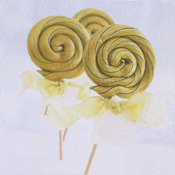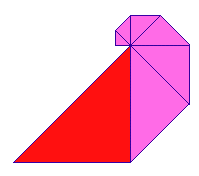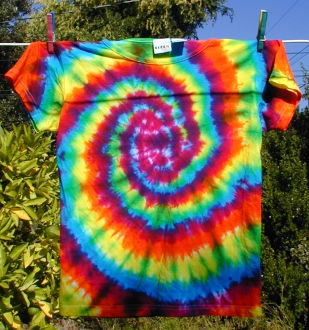
1. More of the spiral:

The spiral is made by drawing quarter circles inside squares:
| Where the squares have Fibonacci number sizes: 1x1, 1x1, 2x2, 3x3, 5x5, etc. |  |
2. The second and third are aproximately Fibonacci spirals
 |
 |
 |
| The lollipops are made by spiraling around a rope of candy with a fixed thickness, so the spiral does not get bigger as it goes out. | The paper-fold spiral gets bigger as it goes out, so it is approximately a Fibonacci spiral | The Tie-dye shirt spiral gets bigger as you go out (thin bands of color in the center, thicker bands of color near the edge) so it is approximately a Fibonacci spiral. |
3. The ratio of consecutive Fibonacci numbers is approximately the golden ratio. The approximation is better when the Fibonacci numbers are larger.
For example (dividing big/small)
1/1 2/1 3/2 5/3 8/5 13/8 21/13 34/21 55/34 89/55 1 2 1.5 1.667 1.6 1.625 1.615 1.619 1.618 1.618 4. Explain the geometric property that a golden rectangle has that makes it golden.
Geometrically a golden rectangle is one where if you cut off a square from the rectangle, the long/short ratios for the big rectangle and the small rectangle are the same.
5. If you measured rectangles around the cars, you would find that car #1 was the closes to a golden ratio (.639 is closest to .618) (the golden ratio for short/long is .618)

6. If you compared the length of the hood to the length of the body of the car you would find that the third car (or perhaps the second, depending on your measurements) was the closest to a golden ratio (.61 is closest to .618):
If you still have questions on any of these questions, you should e-mail me.